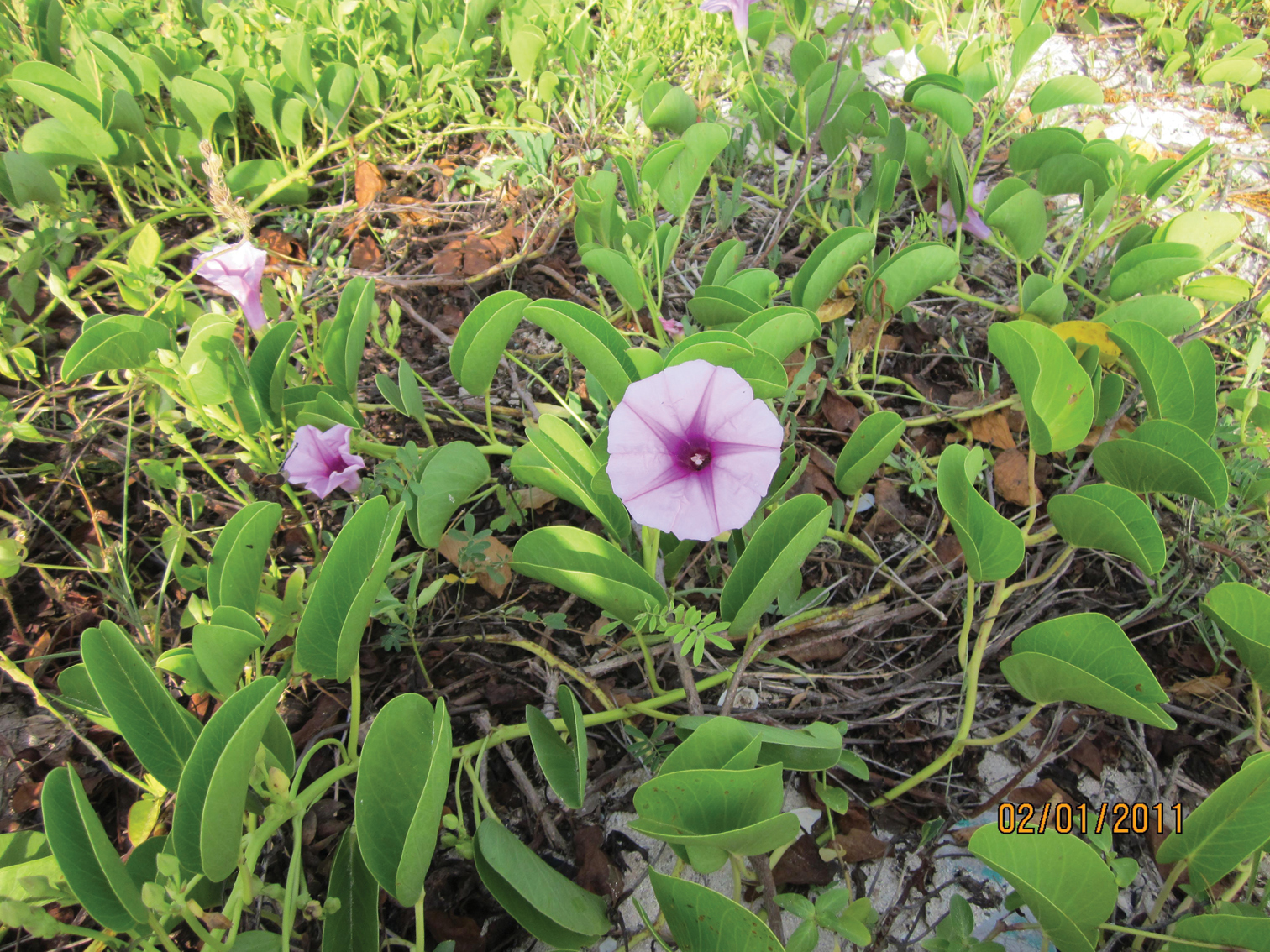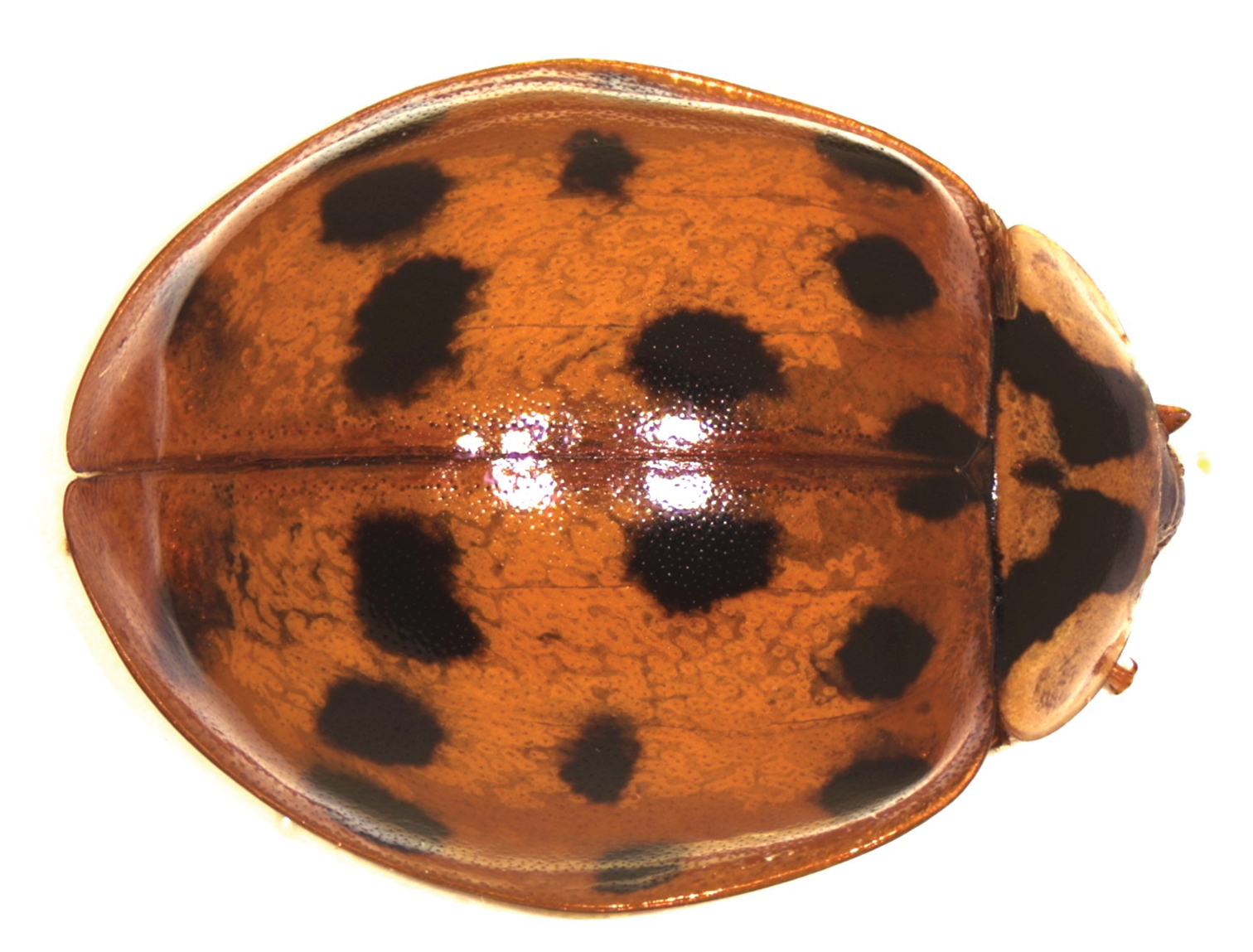ZooKeys 106: 77–81, doi: 10.3897/ZooKeys.106.1242
Record of the invasive alien ladybird Harmonia axyridis (Coleoptera, Coccinellidae) from Kenya
Oldřich Nedvěd1, Jiří Háva2, Daniela Kulíková3
1
Faculty of Sciences, University of South
Bohemia, and Institute of Entomology, Biology Center, Academy of
Sciences of the Czech Republic, Branišovská 31, 370 05 České
Budějovice, Czech Republic
2
Private Entomological Laboratory & Collection, Rýznerova 37, CZ-252 62 Únětice u Prahy, Praha-západ, Czech Republic
3
Podřipská 188, CZ-41185 Horní Beřkovice, Czech Republic
Corresponding author: Oldřich Nedvěd (nedved@prf.jcu.cz).
Academic editor: Michael Thomas
Abstract
The biological control agent and alien invasive ladybird Harmonia axyridis (Pallas, 1773) was recorded for the first time in Kenya, and in equatorial Africa, in 2010.
KeywordsMulticolored Asian Ladybird, distribution, new record, Kenya, Afrotropical region, invasive predator
Introduction
The multicolored Asian lady beetle or harlequin ladybird Harmonia axyridis (Pallas) (Coleoptera: Coccinellidae)
is native to temperate (and mountain subtropical) Central and East
Asia: China, Taiwan, Japan, Korea, Mongolia, Kazakhstan and eastern
Russia (Kuznetsov 1992).
It was introduced in many regions of the world as a biological control
agent against aphids, and later became an invasive species, spreading
100–500 km each year. It is established in at least 37 countries in four
continents (Brown et al. in press).
In Africa, this species was intentionally introduced in two
Mediterranean countries: Tunisia, where it did not survive, and Egypt (Ferran et al. 2000), where it established a limited population (Brown et al. in press). Conversely, it has invaded and established in South Africa (Stals and Prinsloo 2007) and neighbouring Lesotho (Stals 2010) although it was not intentionally introduced there.
This article reports the first record of this alien invasive ladybird beetle in Kenya.
Material examined
Kenya E, Coast province, Kikambala (3°48.28'S, 39°50.00'E;
cca. 45 km N of Mombasa), 30.12.2010–8.1.2011, 2 ♀♀ lgt. + 20
exx. observ., Jiří Háva & Daniela Kulíková lgt., J. Háva coll. et
det.
We observed the beetles on the plant Ipomoea pescapre (Convolvulaceae) on the sea coast (Fig. 1). All individuals belonged to the colour morph succinea (Hope), with 19 well-developed spots on the elytra and well-developed elytral ridges (Fig. 2). Like a previous record of Harmonia axyridis in Uruguay (Nedvěd and Krejčík 2010), this finding was done by chance by a non-professional entomologist.
Figure 1.
The host plant Ipomoea pescapre (Convolvulaceae) on the sea coast in Kikambala.
Figure 2.
Female of Harmonia axyridis from Kikambala, colour morph succinea, with 19 spots and elytral ridge.
Discussion
Because Kikambala is a holiday centre, but not a port or transport node, we consider the occurrence of Harmonia axyridis
here to be the result of a wider and lasting invasion, rather than a
singular incidental and ephemeral introduction with goods.
The observed colour morph succinea is the most common morph in the eastern part of its natural range (Blekhman et al. 2010) and in the invasive European population (Brown et al. 2008).
The size of the spots suggests that the individuals recorded emerged
from pupae at temperatures of around 25°C – the spots would be smaller
or missing at higher temperatures (Michie et al. 2010).
High temperature may be limiting the continued spread of Harmonia axyridis, at least at a local scale. The American (Acar et al. 2001)
and European (Fois et al. unpublished) invasive populations do not
survive temperatures above 33°C. However, the CLIMEX model that used
known physiological limits of Harmonia axyridis indicated that this species may tolerate most southern and eastern African countries, including Kenya (Poutsma et al. 2008). The coastal climate near Mombasa is rather hot (average annual temperature 26°C, Climate & Temperature 2011), while at higher elevations inland, mild temperatures (e.g. 18°C in the capital, Nairobi) are more favourable for Harmonia axyridis.
Although there were several independent introductions of Harmonia axyridis
in Europe and North America, with different source populations from
East Asia, there is a single main invasive population/strain in several
continents (Lombaert et al. 2010).
Thus in future the origin of the population in Kenya should be compared
with known populations from both the native and invasive ranges, using
molecular genetic methods (Blekhman et al. 2010, Thomas et al. 2010, Lawson Handley et al. in press) to determine if it is the same strain, or a different one that might have higher temperature requirements.
Conclusion
We consider that Harmonia axyridis
has established in Kenya, the first fully tropical country to be
invaded, but that its further spread may be hampered by high
temperature and low prey availability. In this region we suggest that Harmonia axyridis may pose a low threat to biodiversity, such as the native ladybird beetles, which are mostly coccidophagous.
Acknowledgement
The study was supported by grant number QH82047 by the Ministry of Agriculture of the Czech Republic.
References
Blekhman AV, Goryacheva II, Zakharov IA (2010) Differentiation of
Harmonia axyridis
Pall. according to polymorphic morphological traits and variability of
the mitochondrial COI gene. Moscow University Biological Sciences
Bulletin 65:174-176.
doi:10.3103/S0096392510040140
Brown PMJ, Adriaens T, Bathon H, Cuppen J,
Goldarazena A, Hagg T, Kenis M, Klausnitzer BEM, Kovar I, Loomans AJM,
Majerus MEN, Nedved O, Pedersen J, Rabitsch W, Roy HE, Ternois V,
Zakharov IA, Roy DB (2008)
Harmonia axyridis in Europe: spread and distribution of a non-native coccinellid. BioControl 53: 5–21.
doi: 10.1007/s10526-007-9132-y
Brown PMJ, Thomas CE, Lombaert E, Jeffries DL, Estoup A, Lawson Handley LJ (in press) The global spread of
Harmonia axyridis (Coleoptera: Coccinellidae): distribution, dispersal and routes of invasion. BioControl.
Ferran A, El-Arnaouty SA, Beyssat-Arnaouty V, Galal H (2000) Introduction and release of the coccinellid
Harmonia axyridis Pallas for controlling
Aphis craccivora Koch on faba beans in Egypt. Egyptian Journal of Biological Pest Control 10:129-136.
Kuznetsov VN (1992) Family Coccinellidae –
ladybirds. In: Lera PA (Ed) Identification key to insects of Far East of
Soviet Union III, 2. Nauka, 333–376. [In Russian]
Lawson Handley LJ, Estoup A, Thomas C,
Lombaert E, Facon B, Aebi A, Evans D, Roy HE (in press) Ecological
genetics of invasive species. BioControl.
Lombaert E, Guillemaud T, Cornuet JM, Malausa
T, Facon B, Estoup A (2010) Bridgehead effect in the worldwide invasion
of the biocontrol harlequin ladybird. Plos One 5: e9743.
doi: 10.1371/journal.pone.0009743
Michie LJ, Mallard F, Majerus MEN, Jiggins FM
(2010) Melanic through nature or nurture: genetic polymorphism and
phenotypic plasticity in
Harmonia axyridis. Journal of Evolutionary Biology 23: 1699–1707.
doi: 10.1111/j.1420-9101.2010.02043.x
Nedvěd O, Krejčík S (2010) Record of the ladybird
Harmonia axyridis (Coleoptera: Coccinellidae) from Uruguay. Klapalekiana 46:203-204.
Poutsma J, Loomans AJM, Aukema B, Heijerman T
(2008) Predicting the potential geographical distribution of the
harlequin ladybird,
Harmonia axyridis, using the CLIMEX model. BioControl 53: 103–125.
doi: 10.1007/s10526-007-9140-y
Stals R, Prinsloo G (2007) Discovery of an
alien invasive, predatory insect in South Africa: the multicoloured
Asian ladybird beetle,
Harmonia axyridis (Pallas) (Coleoptera: Coccinellidae). South African Journal of Science 103:123-126.








